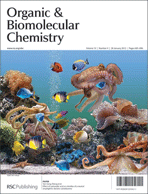The cover of this week’s OBC features work from Min Shi et al. at Shanghai Institute of Organic Chemistry and 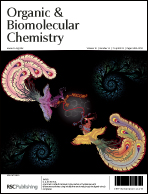 Texas Tech University, who have used chiral zinc(II)–imidazoline–phosphine complexes in a novel catalytic system for the asymmetric Mannich-type difluorination of hydrazones with difluoroenoxysilanes.
Texas Tech University, who have used chiral zinc(II)–imidazoline–phosphine complexes in a novel catalytic system for the asymmetric Mannich-type difluorination of hydrazones with difluoroenoxysilanes.
Asymmetric catalytic Mannich-type reaction of hydrazones with difluoroenoxysilanes using imidazoline-anchored phosphine ligand–zinc(II) complexes
Zhiliang Yuan, Liangyong Mei, Yin Wei, Min Shi, Padmanabha V. Kattamuri, Patrick McDowell and Guigen Li
Org. Biomol. Chem., 2012, 10, 2509-2513
DOI: 10.1039/C2OB07022G
Read the full Communication; it is FREE to access for the next 6 weeks.
This issue also contains:
A Perspective review article: On a so-called “kinetic anomeric effect” in chemical glycosylation, by Ian Cumpstey
as well as the HOT article:
Synthesis and protein binding studies of a peptide fragment of clathrin assembly protein AP180 bearing an O-linked β-N-acetylglucosaminyl-6-phosphate modification
Mark E. Graham, Robin S. Stone, Phillip J. Robinson and Richard J. Payne
If you liked these why not have a look at the rest of the issue here











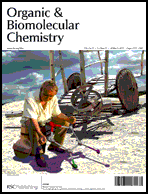
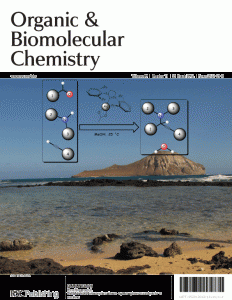
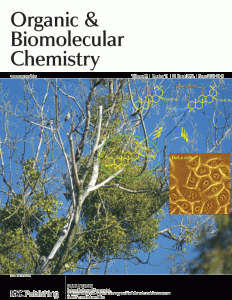

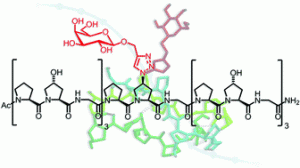
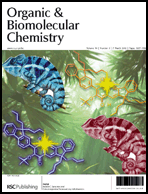
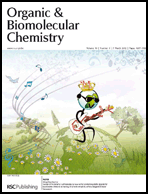
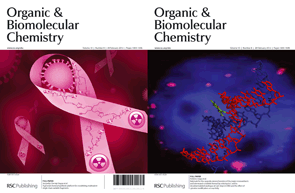 On the cover of
On the cover of 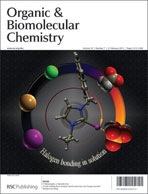 Resnati and colleagues have conducted an NMR study of phosphate oxoanion binding of a 2-iodo-imidazolium receptor with charge assisted halogen bonding, finding a surprisingly strong binding constant for phosphate anions, their work is highlighted on the outside front cover.
Resnati and colleagues have conducted an NMR study of phosphate oxoanion binding of a 2-iodo-imidazolium receptor with charge assisted halogen bonding, finding a surprisingly strong binding constant for phosphate anions, their work is highlighted on the outside front cover.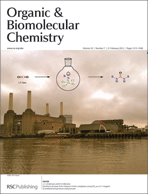 On a completely different topic, Anderson and Moreno have been using CO2 to produce ureas at ambient conditions, using 12- and 14- electron titanium imido complexes:
On a completely different topic, Anderson and Moreno have been using CO2 to produce ureas at ambient conditions, using 12- and 14- electron titanium imido complexes: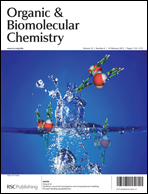 On the outside front cover of this week’s issue is a
On the outside front cover of this week’s issue is a 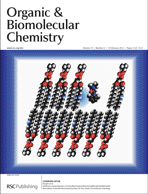 The inside front cover is work from Jonathan Guimond-Tremblay, Université Laval, et al. on the synthesis of three monofluorinated dimyristoylphosphatidylcholine derivatives for use as probes in 19F NMR studies to study the effects of drugs and peptides on model membranes.
The inside front cover is work from Jonathan Guimond-Tremblay, Université Laval, et al. on the synthesis of three monofluorinated dimyristoylphosphatidylcholine derivatives for use as probes in 19F NMR studies to study the effects of drugs and peptides on model membranes.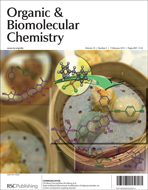 On the outside front cover a communication from Chi-Ming Che and Man-Kin Wong et al. is highlighted, showing their method for gold-mediated bifunctional modification of oligosaccharides via a three-component coupling reaction.
On the outside front cover a communication from Chi-Ming Che and Man-Kin Wong et al. is highlighted, showing their method for gold-mediated bifunctional modification of oligosaccharides via a three-component coupling reaction. On the inside front cover is an article from Brindaban C. Ranu et al. on copper catalysed cyanation of styrenyl bromides to give functionalized cinnamonitriles with preserved stereochemistry.
On the inside front cover is an article from Brindaban C. Ranu et al. on copper catalysed cyanation of styrenyl bromides to give functionalized cinnamonitriles with preserved stereochemistry.